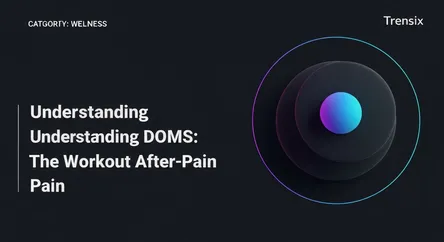Wellness
Understanding DOMS: The Workout After-Pain

Learn what Delayed Onset Muscle Soreness (DOMS) is, why it's a hot topic in fitness, and how to manage the post-exercise ache.
What is it?
Delayed Onset Muscle Soreness (DOMS) is the muscle pain and stiffness felt 24 to 72 hours after strenuous or unaccustomed exercise. It's not the immediate burn you might feel during a workout, but a deeper ache that peaks a day or two later. The primary cause is believed to be microscopic tears in muscle fibers and the subsequent inflammation as your body repairs them. This type of soreness is especially common after eccentric exercises, which are movements where the muscle lengthens under tension, like running downhill or the lowering phase of a bicep curl.
Why is it trending?
DOMS is a universal and frequently debated topic in the fitness community. Many people, from beginners to elite athletes, experience it when they intensify their routine or try a new activity. Its popularity as a search topic stems from the common belief that soreness is a direct indicator of a "good" or effective workout, leading to the "no pain, no gain" mentality. This makes it a widely discussed phenomenon as people seek to understand whether they should be aiming for soreness, how to differentiate it from injury, and the best ways to recover and maintain their training schedule.
How does it affect people?
The primary effect of DOMS is physical discomfort, including muscle tenderness, stiffness, and a temporary reduction in strength and range of motion. This can make everyday activities like walking or climbing stairs difficult. To manage DOMS, gentle movement and active recovery, such as walking or swimming, are highly recommended to increase blood flow and ease stiffness. Prevention is key and includes warming up properly, progressing gradually with new exercises, and ensuring adequate cool-down. Other helpful strategies include staying hydrated, getting enough sleep, massage, and using foam rollers to alleviate muscle tightness.